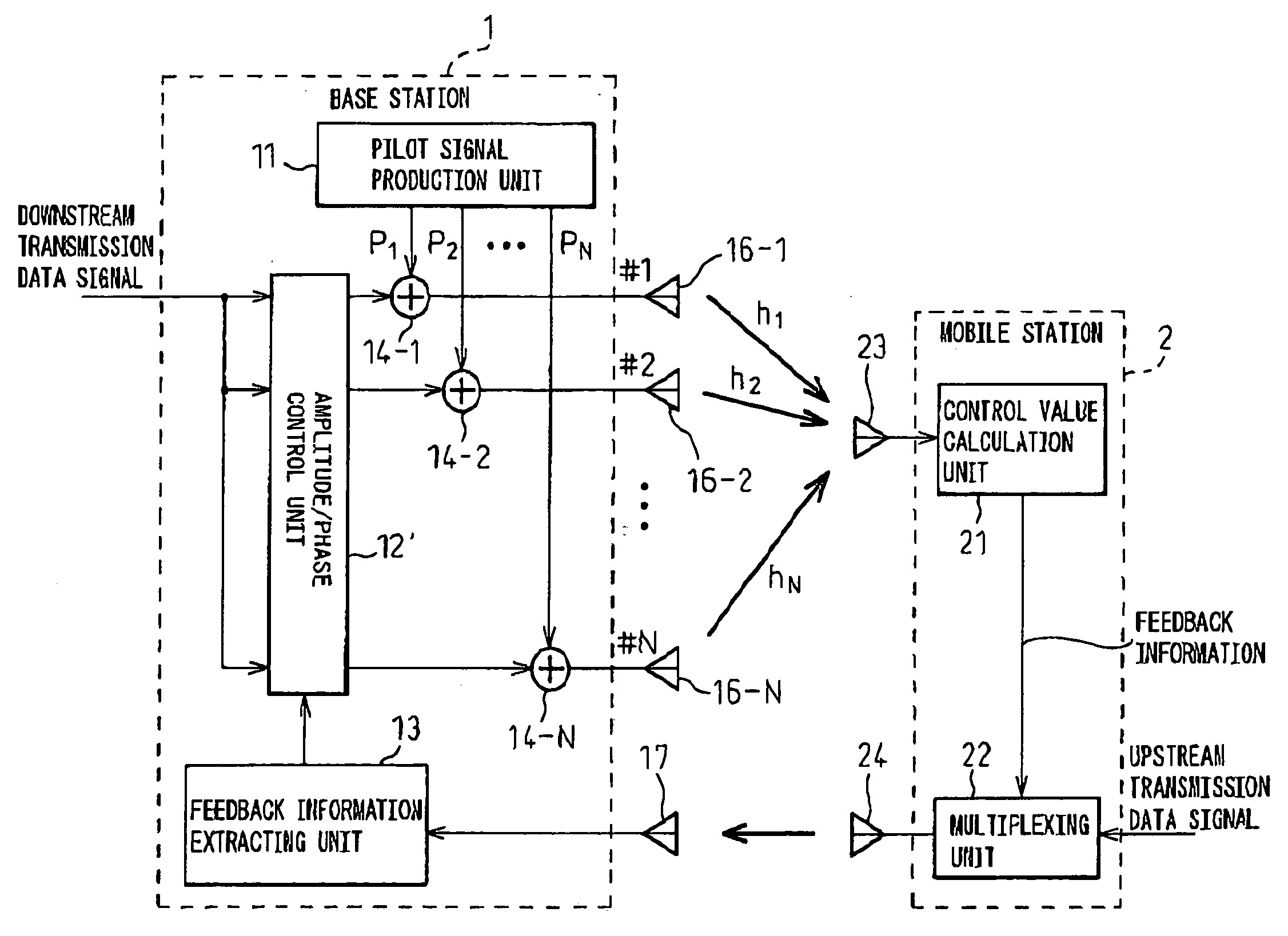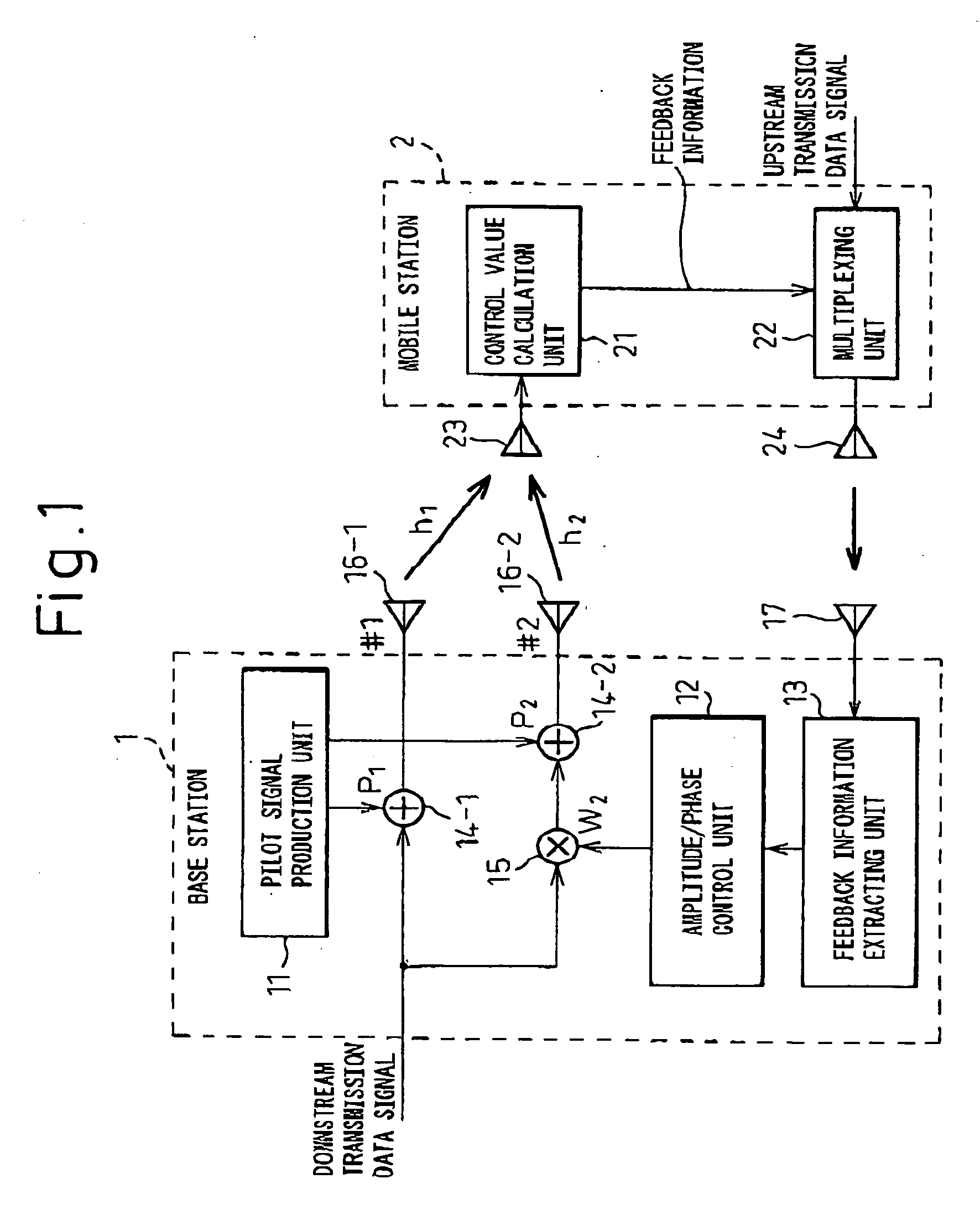Transmission diversity communication system
a communication system and transmission diversity technology, applied in the field of mobile cellular communication systems, can solve the problems of limited deterioration of a characteristic of the transmission diversity communication system, and achieve the effects of preventing the degradation of the precision of inferring the response to an impulse on a channel extending from each antenna, reducing the cost of operation, and small area
- Summary
- Abstract
- Description
- Claims
- Application Information
AI Technical Summary
Benefits of technology
Problems solved by technology
Method used
Image
Examples
first embodiment
The above description is based on the description made in conjunction with FIG. 1 showing the conventional system including two antennas, wherein the number of antennas is increased to be N. However, in the present invention, coefficients determining vectors are, unlike they conventionally are, not calculated and fed back at regular intervals, but are calculated and fed back at different intervals. Therefore, in the base station 1, N transmitting antennas are divided into a plurality of groups (M groups) each including a plurality of (K) antennas. The (K) transmitting antennas belonging to the same group are disposed mutually closely so that they will cause signals to correlate with one another in terms of fading. On the other hand, the M groups of antennas are separated from one another so that they will cause signals to hardly correlate with one another in terms of fading.
In the mobile station 2, inter-antenna group control values (F1,2 to F1,M) are calculated at shorter interval...
second embodiment
As mentioned above, according to the present invention, when the number of transmitting antennas in the base station 1 is increased, if transmission power used to transmit a common pilot signal via one transmitting antenna is held constant, an increase in total transmission power used to transmit all common pilot signals is moderate. A degree of interference to which common pilot signals interfere with a data signal in a multipath environment can be minimized. On the other hand, when the total transmission power used to transmit all common pilot signals is held constant in the base station 1, a decrease in transmission power used to transmit a common pilot signal via one transmitting antenna is moderate. Degradation in precision in inferring the response to an impulse on each channel can be avoided.
FIG. 5 shows the basic configuration of the closed-loop diversity communication system in accordance with the present invention. FIG. 6 shows an example of an arrangement of transmitting ...
PUM
 Login to View More
Login to View More Abstract
Description
Claims
Application Information
 Login to View More
Login to View More - R&D
- Intellectual Property
- Life Sciences
- Materials
- Tech Scout
- Unparalleled Data Quality
- Higher Quality Content
- 60% Fewer Hallucinations
Browse by: Latest US Patents, China's latest patents, Technical Efficacy Thesaurus, Application Domain, Technology Topic, Popular Technical Reports.
© 2025 PatSnap. All rights reserved.Legal|Privacy policy|Modern Slavery Act Transparency Statement|Sitemap|About US| Contact US: help@patsnap.com



